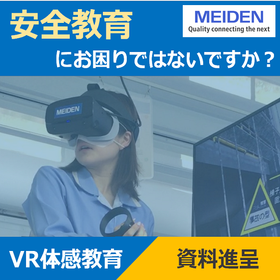Trends in molding, processing, and packaging applications of biomass plastics, ISO and JIS standards.
S11223
★A thorough explanation of the evolution of polylactic acid-based technology and the design of high-performance, high-functionality materials! ★Requirements for food packaging, food containers, and tableware, along with practical examples.
Lecturers Part 1: Representative from Nippon Seiki Resin Industry Co., Ltd. Part 2: Professor Masatsugu Mochizuki, Doctor of Engineering, Special Appointment, Kyoto Institute of Technology, Fiber Science Center Part 3: Mr. Masao Kunio, Circular Polymer Group, Environmental Chemistry Research Department, National Institute of Advanced Industrial Science and Technology (AIST) Target Audience: Engineers, researchers, technical management personnel, and sales representatives interested in biomass plastics Venue: Kawasaki City Industrial Promotion Hall, 10th Floor, Conference Room 1 [Kanagawa, Kawasaki] 10-minute walk from Kawasaki Station on JR or Keikyu Line Date and Time: December 22, 2011 (Thursday) 10:45 AM - 4:30 PM Capacity: 30 people. *Registration will close once full. Please apply early. Participation Fee: [Early Bird Discount Price] 51,450 yen (tax included, including text costs) for 2 people from one company. *Limited to Tech-Zone members who apply by December 8. Membership registration is free. *After December 8, the [Regular Price] will be 54,600 yen (tax included, including text costs) for 2 people from one company.
Inquire About This Product
basic information
**[Lecture Summary 2]** Among the various bioplastics, polylactic acid (PLA) has the highest potential and is advancing in practical applications, particularly in food uses and other container and packaging materials. This presentation will summarize the current status of technology and market development, as well as the remaining technical challenges. It will also advocate for establishing a decisive competitive advantage by leading rather than following the material innovations expected in the container and packaging materials market in the near future. **[Lecture Summary 3]** For biodegradable plastics and biomass plastics, which are types of bioplastics, the degree of biodegradability and the proportion of biomass raw materials included are important characteristics. However, expressions like "biodegradable in nature" or "made from biomass" can mislead consumers, and properly evaluated indicators should be presented according to established rules. This lecture will introduce evaluation methods based on ISO international standards and JIS Japanese industrial standards. As a method to determine the biomass raw material ratio, the use of accelerator mass spectrometry to measure radioactive carbon-14 concentration will be introduced. Additionally, as an evaluation method for biodegradability, conditions that most promote biodegradation, such as aerobic composting conditions and high-temperature slurry methane fermentation anaerobic biodegradation evaluation methods, will be presented.
Price range
P2
Delivery Time
P2
Applications/Examples of results
Part 1: Molding and Processing System Compatible with Eco-Materials - Heat-Resistant Poly Lactic Acid Injection Molding System "N-PLAjet" (Tentative Title) [10:45-12:00] Part 2: High-Performance and High-Functionality Technologies for Bioplastic "Poly Lactic Acid" and Applications in Food Uses and Other Container and Packaging Material Fields [13:00-15:00] Part 3: Measurement Methods for Biomass Carbon Content and Biodegradability of Bioplastics, Recent Requirements (Topics, ISO/JIS Standards, etc.) [15:15-16:30] 1. What are Bioplastics 2. Measurement Methods for Biomass Carbon Content 2-1. Mechanisms for Recognizing Biomass Carbon 2-2. Measurement of Biomass Carbon Content Using Accelerator Mass Spectrometry 2-3. Examples of Biomass Carbon Content Measurement 2-4. Japanese Proposal Related to Biomass Carbon Content ISO/CD 16620-1, 2, 3 3. Measurement Methods for Biodegradability of Bioplastics 3-1. Biodegradation Assessment Method at 58 Degrees in Controlled Compost (ISO 14855-2) 3-2. Anaerobic Biodegradation Assessment Method Under Methane Fermentation Conditions in Digested Sludge (ISO 15985 and Japanese Proposal ISO/DIS13975)
Company information
Our company has developed its business from "seminar planning" to various forms such as "lecturer dispatch," "publishing planning," "technical consultant dispatch," "trend research," "business matching," and "business development consulting," in order to support clients in a wide range of fields including chemistry, electronics, automotive, energy, medical devices, food, and building materials. By doing so, we have advanced our company and opened up new markets. AndTech promises to continue listening to our clients' voices, entering the business areas and markets they desire, and to remain a company that is loved by our clients, as we share their challenges, think together, and forge new paths.












